Exclusive Interview with Tami Stevens on PBDA’s 30th Anniversary
On Saturday, May 25th, the Pasadena Ballroom Dance Association will celebrate its 30th anniversary of swing classes and weekly dances! That’s an incredible run considering how many swing venues have come and gone over the years. PBDA was around before most people had heard the term “Lindy Hop”, and well before the neo-swing revival in the late 90’s. Many of us, including some of the best swing dancers around today, did our first triple steps at PBDA! Countless friendships originated there, as well as lots of marriages!

I asked Tami Stevens, who founded PBDA with her sister Erin, about how they started it, some of the best memories they’ve had over the years, and of course, how they found swing dance legend Frankie Manning and how they brought him out of retirement:
LA Lindy Hop: How did you and Erin start PBDA?
Tami Stevens: Erin and I started dancing as children. Our mother was a professional ballet dancer in Hollywood in the 1940s, so we grew up dancing and admiring our parents, who were wonderful jitterbug dancers. We took jazz and ballet classes as teenagers, and Erin did her first two years of college at Pasadena City College, taking all their dance classes, which is where she met her first dance partner, Steven Mitchell. Disco dance was ‘in’ at the time, and Erin and Steven began winning Disco Dance contests together all around the Los Angeles area. Erin went on to graduate in “Dance choreography and teaching” from UC Irvine. She was supporting herself through college by winning competitions and teaching at Ballroom studios in Orange County.
During this same time, I was President of the Ballroom Dance Club at Pasadena City College (I graduated with a degree in Philosophy from CSU Los Angeles). When prop 13 closed dance classes at the local colleges, and Erin graduated and moved back home, we opened our own group classes at Pasadena’s Vasa Hall. It’s hard to imagine it now, but at that time there was nothing like Pasadena Ballroom Dance. We’ve always featured American Social Dance Classes (as opposed to studio style International Ballroom), at affordable prices without contracts. Erin and I started our classes with the concept of running them more like progressive college classes.
What was it like in the early days of PBDA?
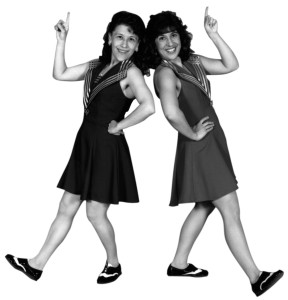
We hung hand-written flyers around town, and got twenty students at our first class, (sixteen were relatives!). But after the first series, our students wanted more. So, we did a beginning AND an intermediate class. A few months after we started, a writer from the Los Angeles Times newspaper came and sat in the back of one of our classes. She wrote about this “unique Pasadena Family” that was teaching Ballroom and Swing (at that time, our father set up our sound equipment each night, and our mother checked in our students at the door, which by the way, she still does.) We didn’t have a business name at the time, but the phone began ringing off the hook with newspaper readers who found us through our parent’s business (which the article mentioned). 100 students showed up for the next series! From there, the ball kept rolling. Our next classes drew over 200 people, and we immediately needed a larger hall. We found Fellowship Hall (behind a church), where we settled in. We expanded our classes so we were teaching most nights of the week, then added an additional location, as well!
Our early classes covered Foxtrot, Waltz, Cha-Cha, Rumba, and East-Coast Swing, hence the name: Pasadena Ballroom Dance. But Erin became very interested in the roots of Swing, and she (and Steven Mitchell) went to New York in search of original Swing dancers. We had seen an old Life magazine that had pictures of dancers and the words: “Lindy Hop” across it. Erin said, “that’s what I want to be doing, the Lindy Hop!” I held the classes in Pasadena together, while Erin flew back and forth between New York and Pasadena. She and Steven met original Lindy Hopper: Al Minns in New York, and studied with him for two years. This was 1984, and we were the only dancers doing the Lindy Hop here. East-Coast and West-Coast Swing were very popular in California, but nobody even knew the term “Lindy Hop” at that time. We started printing on our flyers: “Jitterbug/East-Coast Swing/Lindy Hop” to bring in students. Once they walked into our classes to learn Swing, we exposed them to Lindy Hop.
How did Erin find Frankie Manning?
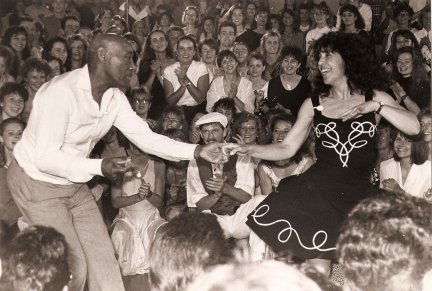
After Al Minns passed away, Erin and Steven continued to pursue their historical studies of the Lindy Hop. When they heard the name Frankie Manning, Erin went to the Pasadena Library looking for a New York phone book. There were three Frankie Manning’s listed, and she called the first one and asked, “Are you Frankie Manning the dancer?” He replied, “No, I’m Frankie Manning the Postal Worker.” But then, after a short pause, he added, “But I used to dance.” He told them he “wouldn’t teach them, because he wasn’t an instructor. But he would meet with them.” That’s all Erin needed to hear, and she and Steven headed back to New York. They rendezvoused with him at a nightclub, and after he watched them dance socially, he did agree to give them lessons, explaining that they “had soul, and excellent rhythm.” He picked them up at their hotel the next morning, and drove them to his apartment in Queens for the first of many private lessons. According to Frankie’s autobiography, that was his “first real teaching experience.” Erin has always said that, even though Frankie couldn’t break down the steps in those first lessons, he gave them the essence of the dance. He worked on their rhythmic bounce to give them the “groove” of the basics. Erin reports that Al Minns gave them air steps, tricks and flashy moves, but Frankie gave them “the heart and soul of the Lindy Hop.” Footage from one of their early private lessons in Frankie’s apartment can be viewed in the made for television documentary: Never Stop Swinging (Julie Cohen, 2009).
Erin brought Frankie out to Pasadena for a number of early workshops at PBDA, so we could all meet him and study from him. Frankie always credited Erin and Steven as being his “first students” launching his second era of Swing career. And when he won the Tony Award in 1989 (along with Cholly Atkins, Henry LeTang and Fayard Nicholas) for best choreography for the Broadway musical Black and Blue, Frankie called our PBDA phone the next morning. He called to tell Erin, “It’s all because of you, you know!” I was a very proud sister that day!
What are some of the best memories you and Erin have of PBDA?
Over PBDA’s 30 years, Erin and I have had some incredible experiences. In the mid-1990’s we were the featured dancers on ABC television’s weekly Home and Family Show. Then PBDA was hired at Disneyland to teach Swing Dancing to tourists in the park, as well as to choreograph and perform weekly Swing routines (The Jump Jive Boogie Swing Party at Carnation Plaza).
The name, “Pasadena Ballroom Dance”, was printed on every program handed out in the park at that time. You couldn’t pay for that kind of publicity! And our classes in Pasadena were enormous then, we were drawing 300 plus people per class, six nights a week. It was crazy!

Our “Swing Camp Catalina,” which we ran from 1994-2004 brought Swing dancers from all parts of the globe to the Casino Ballroom on Catalina Island. Erin was flown to Washington to perform with Steven Mitchell at the White House (PBS television’s In Performance at the White House) in front of President Clinton and First Lady, Hillary–that was a PBDA highlight. And dancing on floats in the Rose Parade on New Year’s morning (we did it twice!) was definitely a highlight, too. Then, we were contracted to write a history/reference textbook, Swing Dancing (ABC-Clio publishers), which was published in 2011 and is used as a text book at universities across the country.
Truly, though, we feel that the best thing about our business is how happy we’ve been able to make so many people, exposing them to social dancing. Many people have met and married through PBDA, and we’ve positively affected a lot of lives as lasting friendships have formed in the classes. But I honestly feel our biggest contribution to dance in these past 30 years, has been to give so many people the love of American social dance.
What were some of the challenges you faced and overcame?

Our biggest challenges? Over the 30 years, the business has ‘tied us’ to Pasadena. We both traveled the world (mostly Erin), teaching and performing at Swing Camps in the 1990s. So, we’ve had to cover for each other in the classes. The students sign up for our classes, and they get us. We are ALWAYS THERE, and that’s a big part of why we’ve been successful, I believe. Plus we have the best teaching assistants anyone could ever hope for. We also host live Swing bands EVERY Saturday night at PBDA, and that’s a huge commitment. We never wonder “what we’ll be doing on a Saturday night” – we’ll be at our own dance!
Another challenge has been to keep a great venue over the years. We’ve been lucky to have found locations for our classes that have easy free parking, and great wood floors. When we lost our main hall (after 25 years in the building), we thought we might be ‘finished.’ But we kept plugging away, and came up with another hall. And we love our current location, even more than our last. One other challenge has been to stay in tune with current trends. It’s easy to just “keep doing what you do”, but we’ve seen a lot of changes in dance trends over the years, and somehow we’ve been able to accommodate those trends (for instance, when Salsa was huge, we added more Salsa classes.) We just wish we had a crystal ball to see what’s coming next.
How has the LA swing scene changed over the years?
The Swing scene has changed dramatically over the years. In the 1980s, West Coast Swing was all the rage for us. We had huge West Coast classes, and then in the 1990s West Coast faded for us, as the Lindy Hop became so popular. Between the movies, the “Gap” commercial, and all the media coverage of Swing Dancing, in 1999 there was Swing frenzy.
Our first Swing Camp Catalina drew 90 dancers in 1994. In 1999, we sold 1,850 full passports to the camp, with an additional 400-plus joining us for the Saturday evening dance.
What kind of trends do you see in partner dancing in LA now?
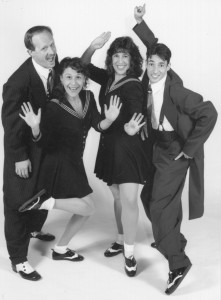
West Coast Swing is back (hooray!), and people are still dancing Lindy Hop and Jitterbug/East Coast, too. Our classes are not packed-out as they were in the 90s, but we continue to have large group classes in all styles of Swing (and Ballroom, too!).
Where else do you like to go swing dancing besides PBDA?
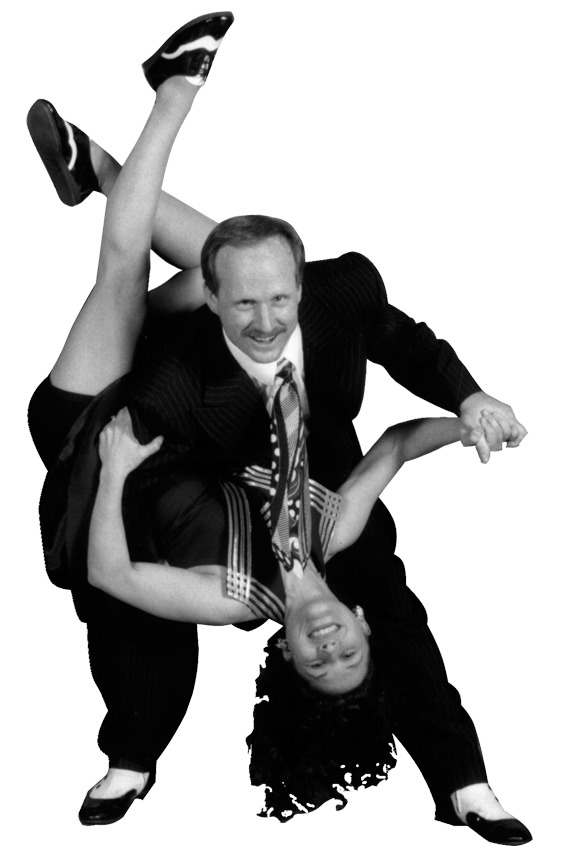
We are appreciative of the other Swing venues in our area, which help keep Swing alive. While my sister (between our classes, her husband and three young children) doesn’t get out dancing much anymore, I still love stepping out on the social dance floor. My husband Scott Price and I especially enjoy Joe’s Bar in Burbank for the great live bands. We also have fun at Lindy Groove, and we go out West Coast Swing dancing every chance we get.
Tell us more about the 30 year anniversary celebration on May 25th.
Our 30-year anniversary party will feature: Pete Jacob’s full Wartime Radio Revue Swing Orchestra on MAY 25th, from 8-11:30pm. We’ll have a Swing Lesson from 7:30-8pm, plus special guests and performances, light hors d’oeuvres (and cake, of course!). Our location is: Grace Hall, 73 N. Hill Ave., in Pasadena (behind the church). www.pasadenaballroomdance.com.
Thanks Tami!
Thanks for this, Brian! – Tami Stevens
With such a long and distinguished history, we owe PBDA a huge “thank you” for preserving swing dancing with their classes and venerable weekly dances, and of course with re-introducing the world to Frankie Manning. So, mark Saturday May 25th on your calendars. Come show your support and help PBDA celebrate 30 years of swing dancing! See you there! – Brian

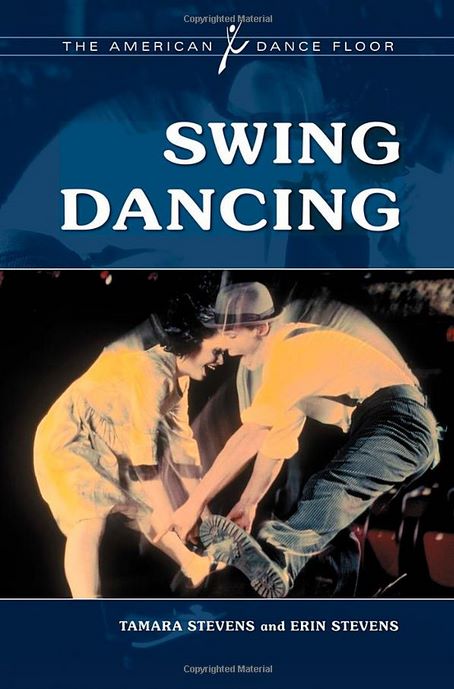

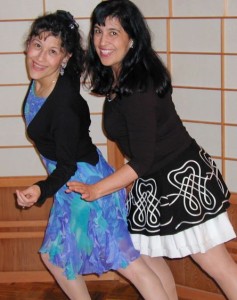




Please Leave a Question or Comment
Hi Erin and Tami and also your parents. I really enjoyed reading this. I enjoyed swing camp so very much.. Thank you for letting me watch. I still to this day have the original swing canp poster you made for my bus. Year after year I could not wait to see all of you again..Thank you for being so nice to me. Ron
Agreed with Rhonda. I would not be surprised if every Lindy Hopper in So.Cal was a “descendent” of PBDA. Happy 30 years Erin and Tami!
Nice interview Brian!
Thanks Chris!!!
Keep Swinging…
Really nice article Brian! Hope it generates some MUCH deserved respect and celebration for PBDA!
We ALL owe them a debt of gratitude and admiration!
I can’t thank them enough for the enhancements they have added to my life, but I keep trying.
30 years of countless smiles! CONGRATULATIONS Tami and Erin!
Thanks for your comments Rhonda! Yes, we definitely owe them a debt of gratitude! – Brian
A really nice interview, Brian. Good job!
Thanks Gene!